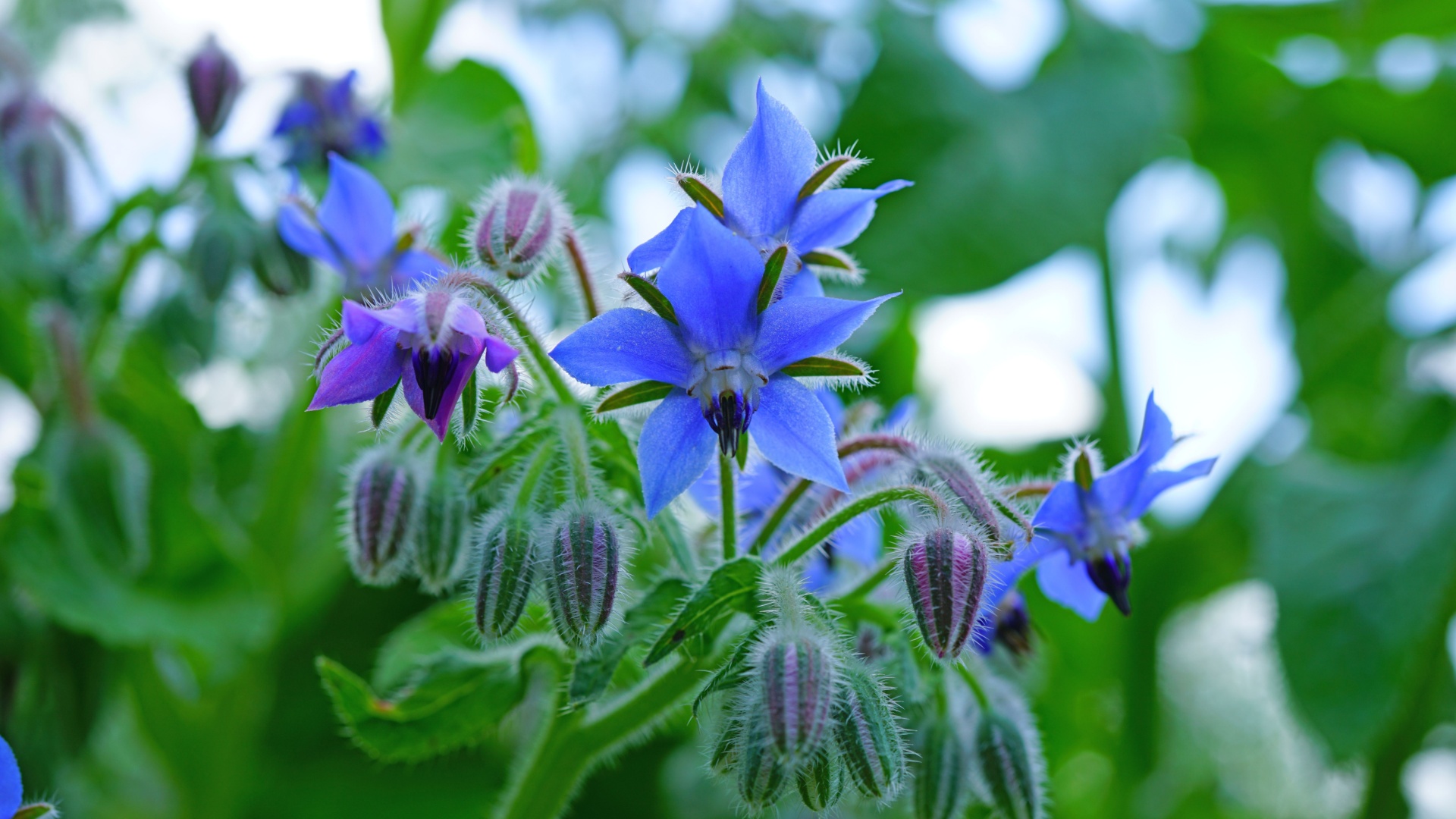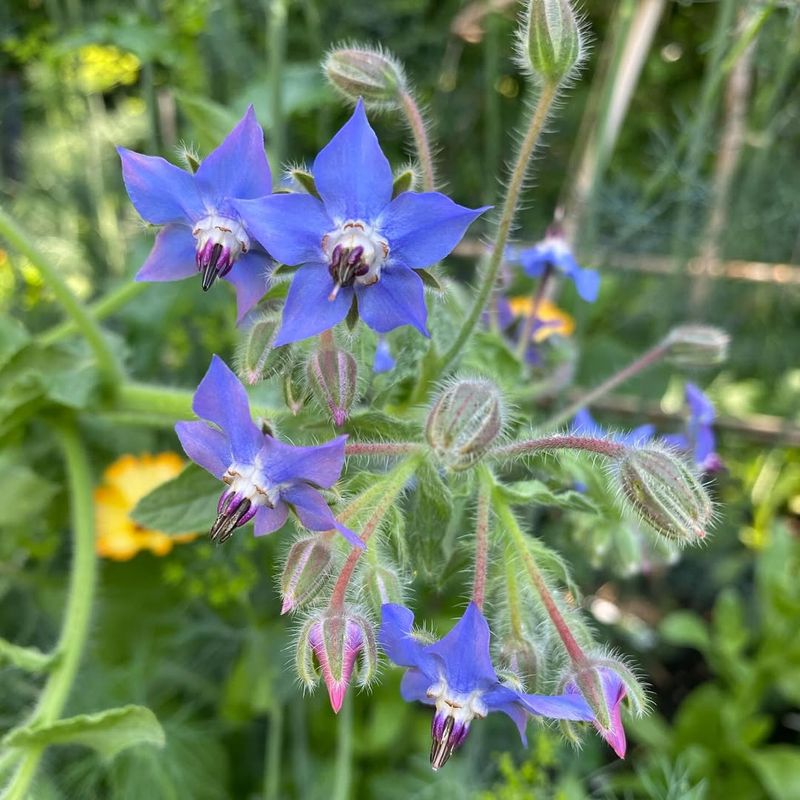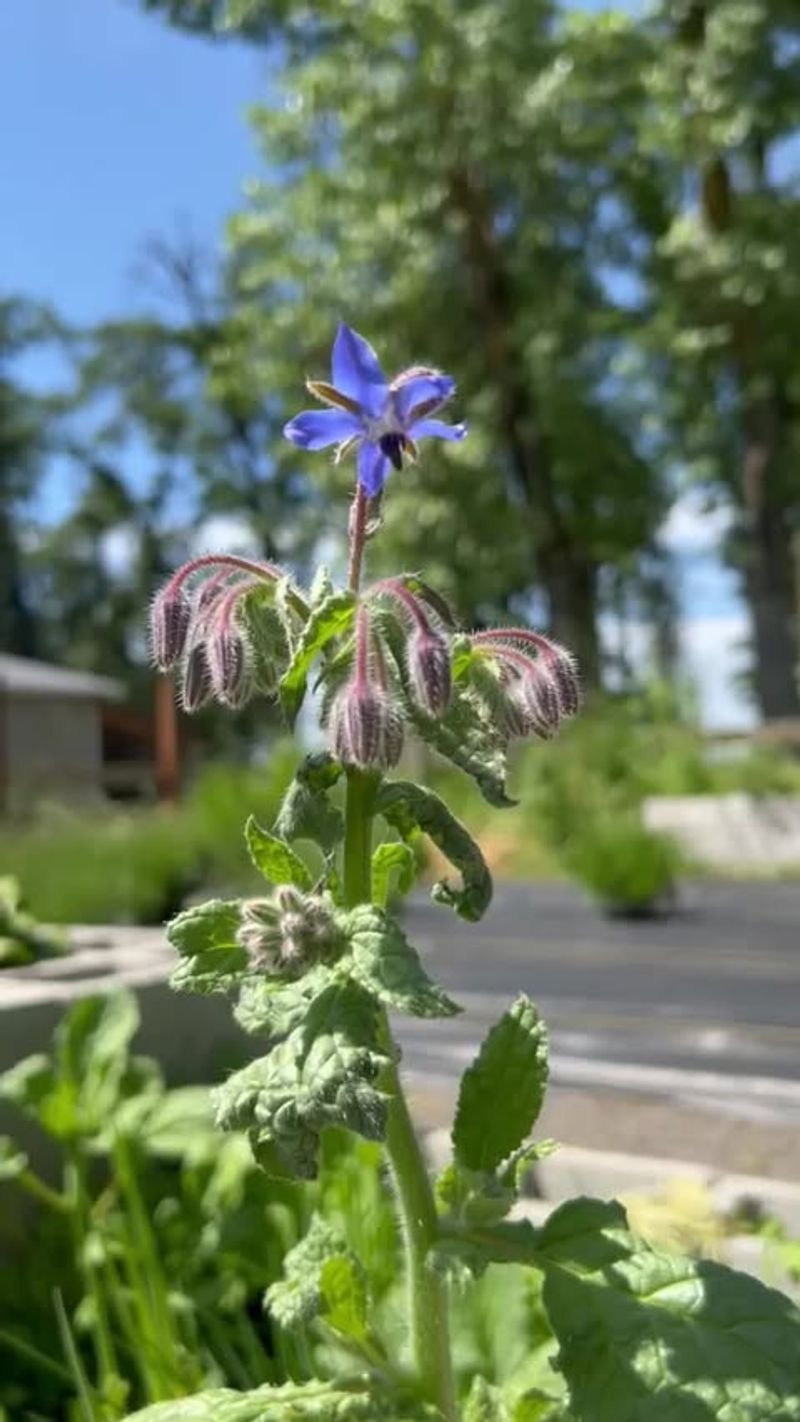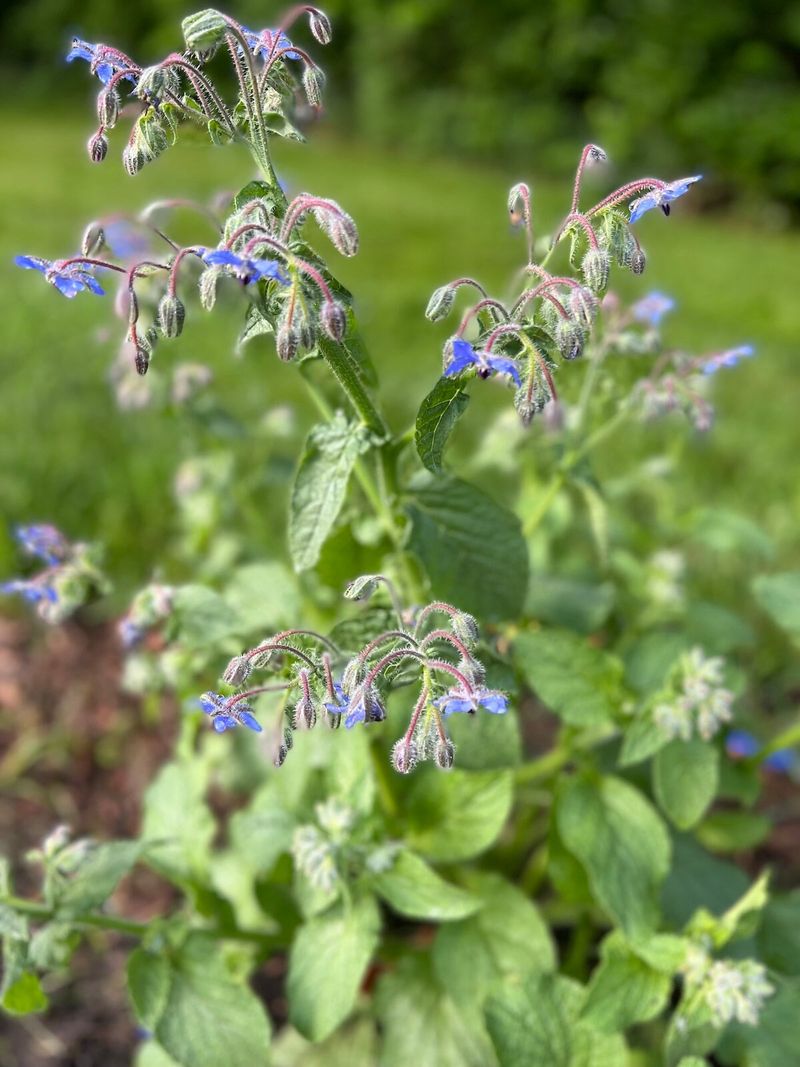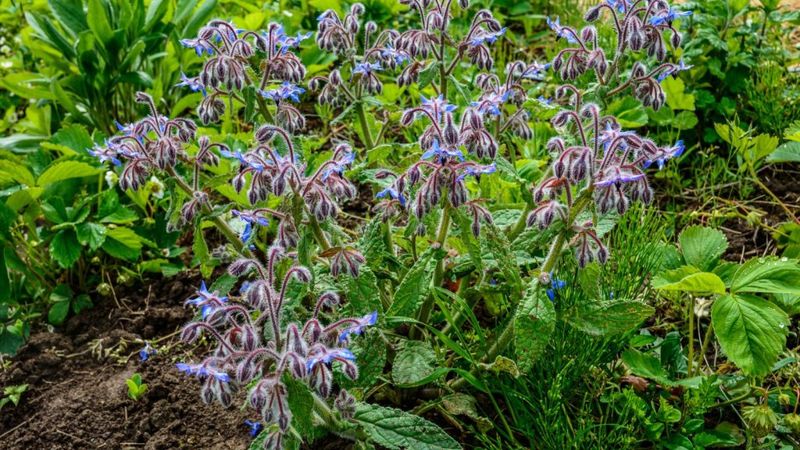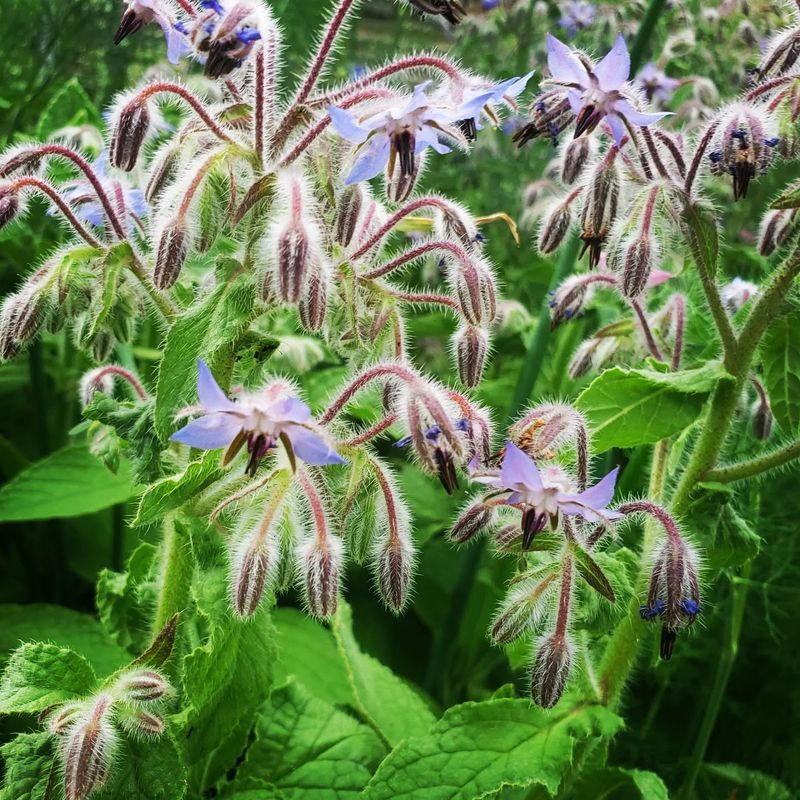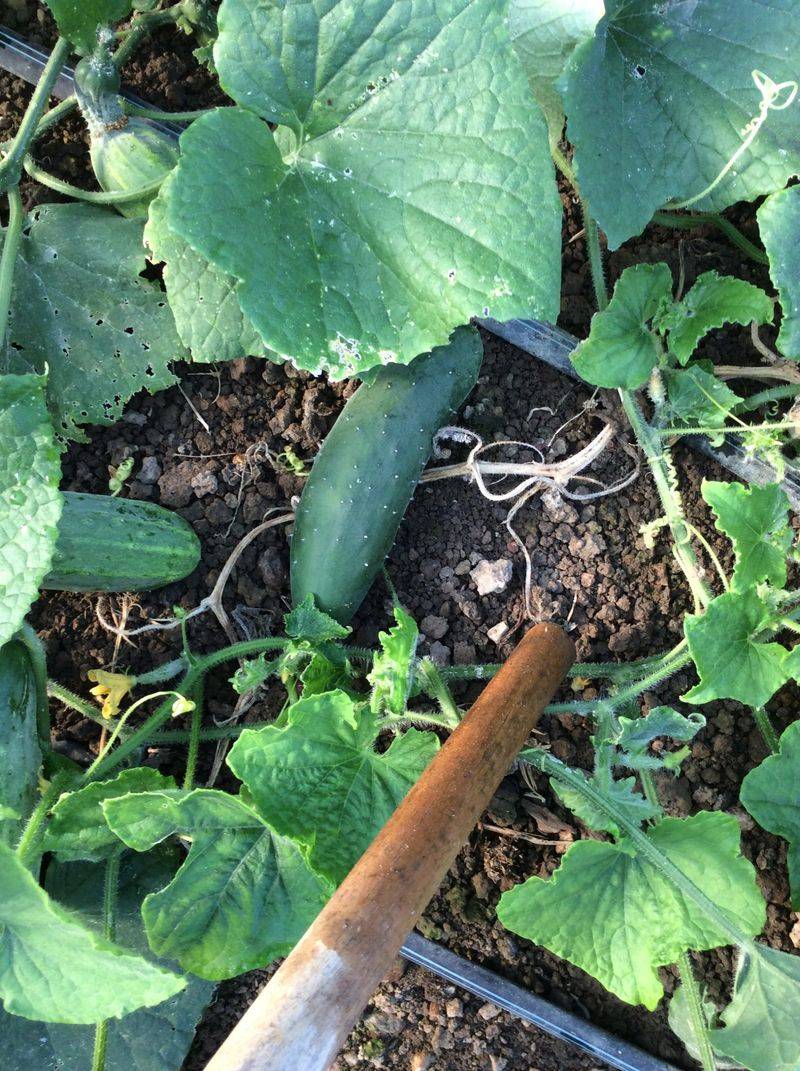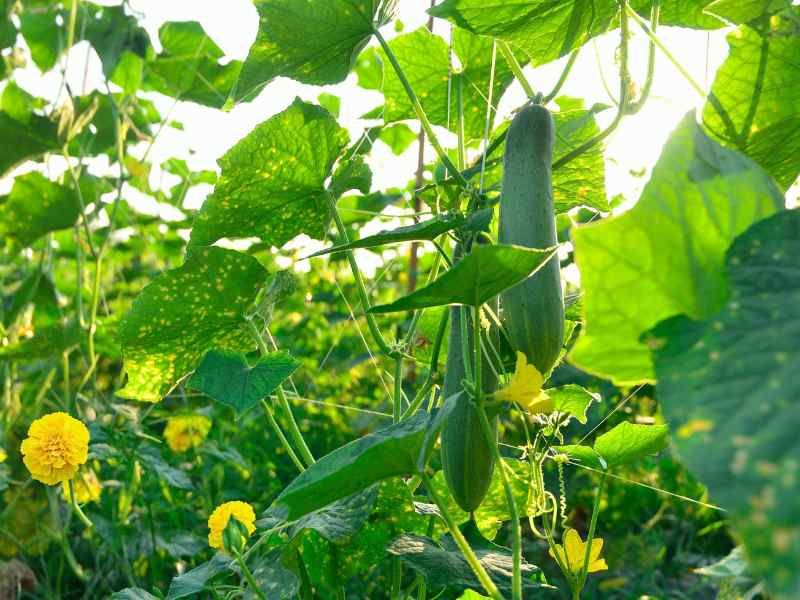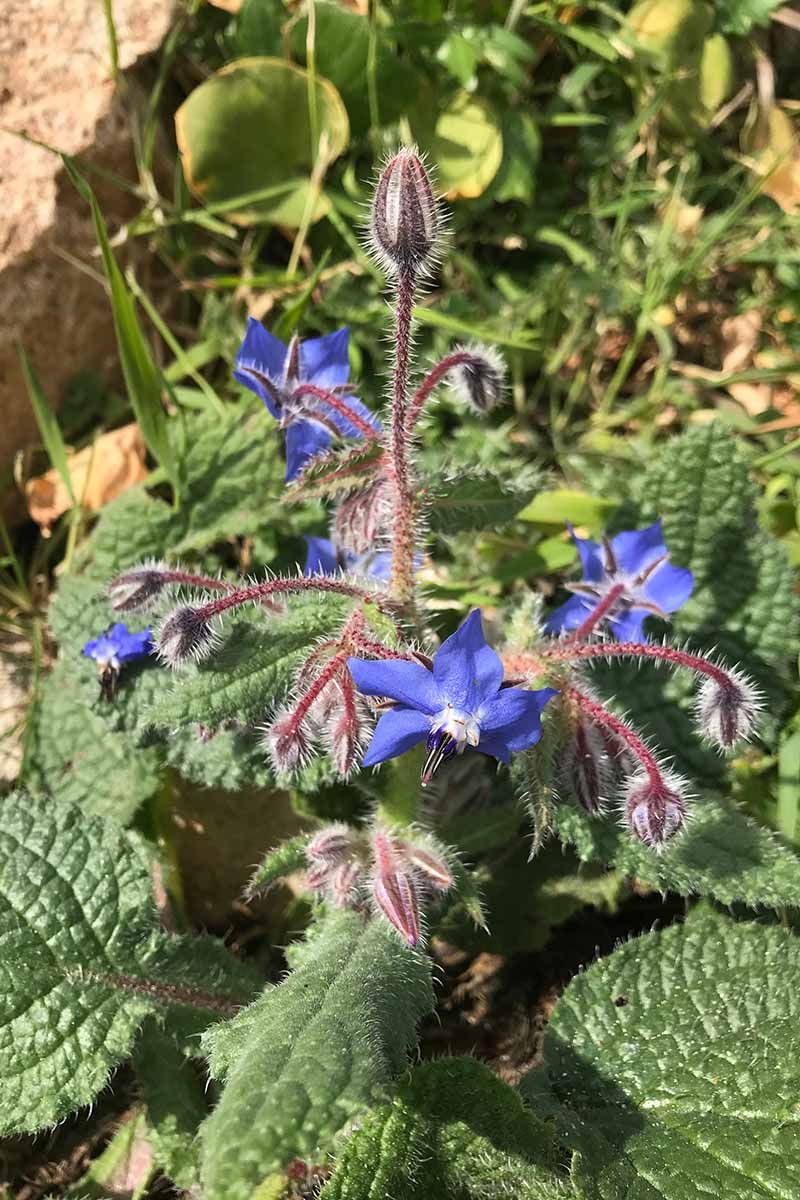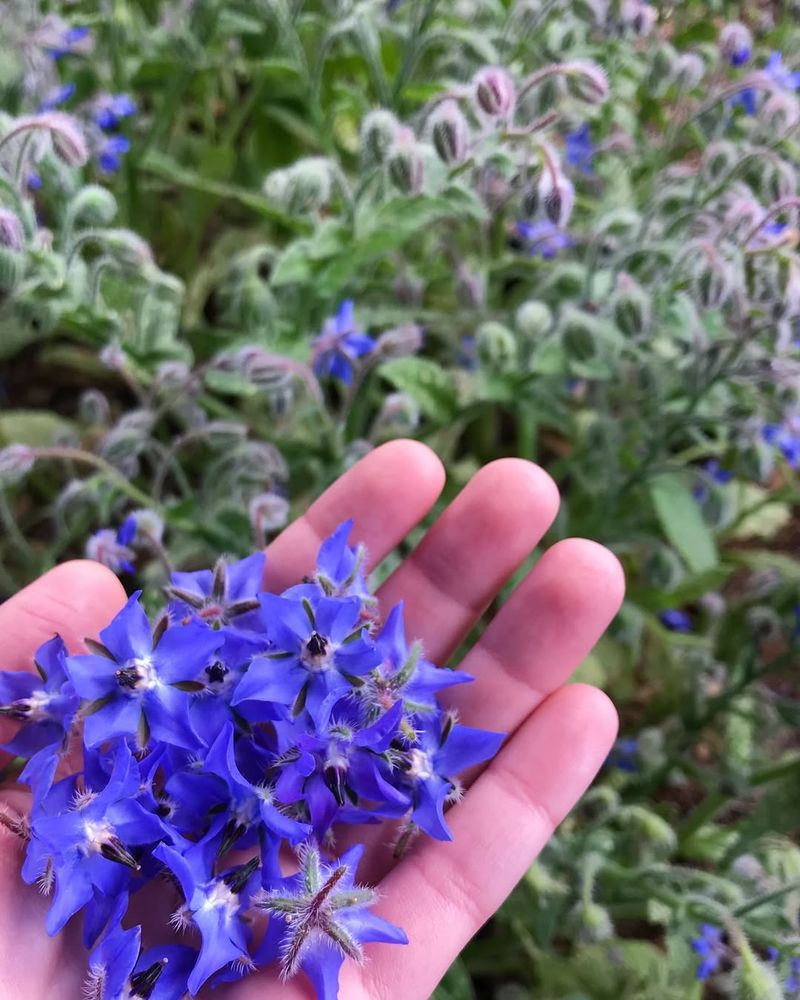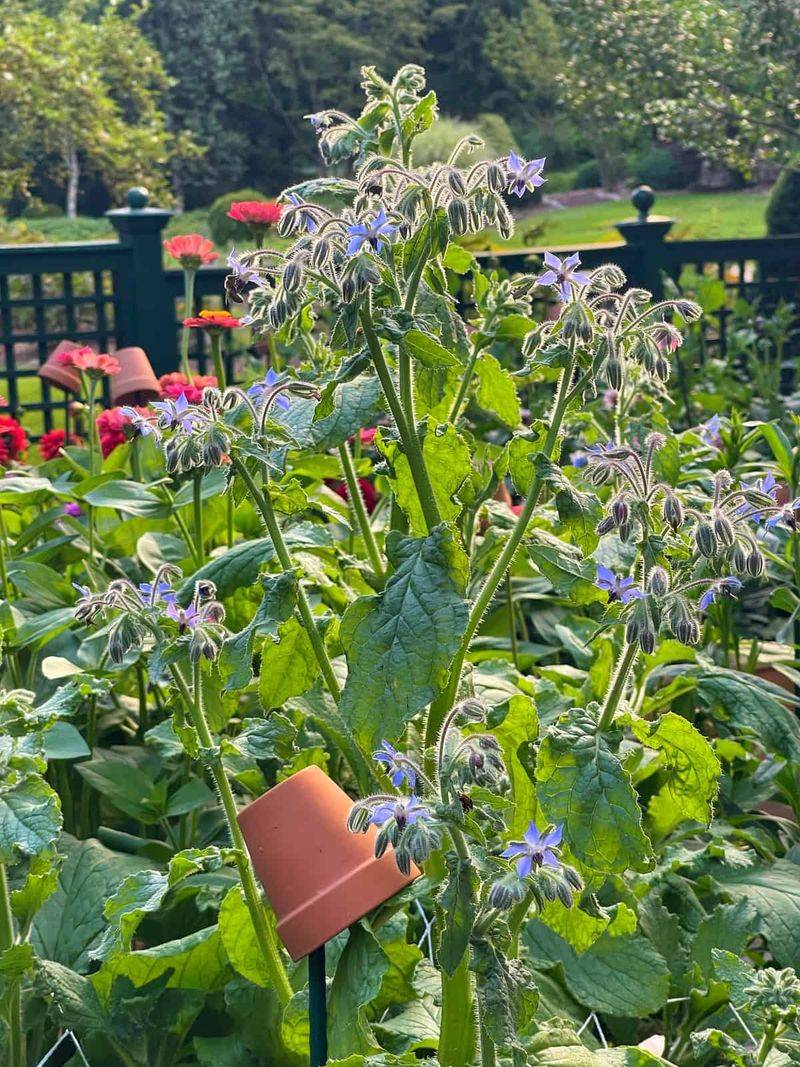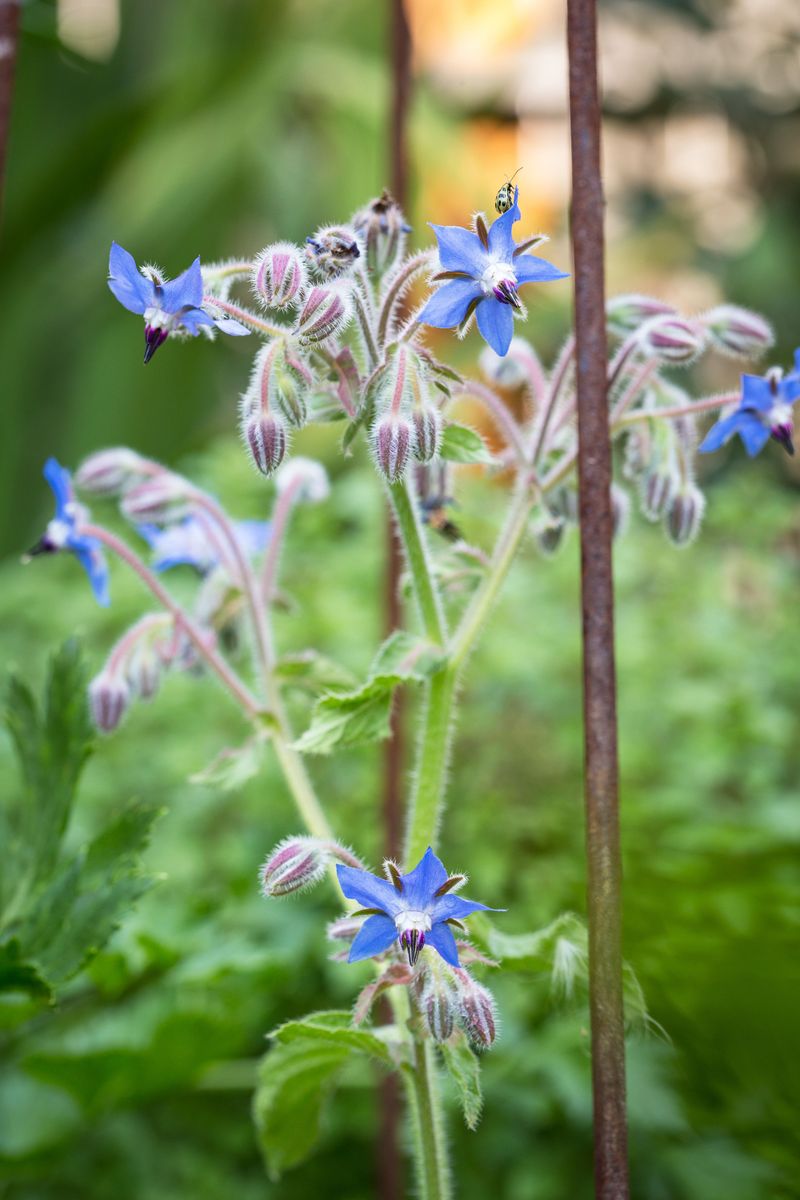Borage might not be the first plant that comes to mind when growing cucumbers—but it should be. This humble herb is a powerhouse companion, doing everything from boosting pollination to repelling pests and improving cucumber health.
These 11 surprising benefits explain why so many gardeners swear by this dynamic duo.
1. Pollinator Paradise
The star-shaped blue flowers of borage are absolute magnets for bees, butterflies, and other beneficial insects. These busy pollinators can’t resist borage’s sweet nectar, and while they feast on these blooms, they’ll naturally visit your cucumber flowers too.
More pollination means more cucumbers! Garden studies show cucumber yields can increase by up to 30% when borage grows nearby. The relationship creates a bustling ecosystem right in your vegetable patch.
2. Natural Pest Deterrent
Cucumber beetles, those striped garden menaces, absolutely detest borage. The herb’s tiny hairs and natural compounds create an environment these pests avoid at all costs. Your cucumbers gain a protective shield without chemical sprays.
Borage also confuses and repels aphids, keeping these sap-sucking insects from settling on your cucumber vines. The herb’s strong scent masks the cucumber’s natural aroma that would normally attract these destructive pests.
3. Soil Enrichment Partner
Borage’s deep taproot breaks up compacted soil, creating channels for water and nutrients to reach cucumber roots. This natural tilling action improves soil structure without any work from you!
As a dynamic accumulator, borage pulls up calcium, potassium, and silica from deep soil layers. When borage leaves decompose, they release these minerals right where cucumber plants can use them. The herb essentially operates as a living fertilizer factory.
4. Flavor Enhancer
Gardeners have noticed for generations that cucumbers grown near borage develop a sweeter, more complex flavor profile. The relationship seems to influence cucumber fruit development in subtle but delicious ways.
Chef-gardeners particularly prize this pairing for producing gourmet-quality cucumbers. The herb’s influence creates cucumbers with perfect balance between sweetness and that classic cucumber freshness. Many pickle makers insist that borage-adjacent cucumbers make the crispest, most flavorful preserves.
5. Microclimate Magician
Borage’s broad, fuzzy leaves create gentle shade for cucumber roots, keeping soil temperatures cooler during hot summer days. This natural air conditioning prevents stress on cucumber plants when temperatures soar.
The herb also acts as a windbreak, protecting tender cucumber seedlings from damage. Borage’s structure allows enough airflow to prevent fungal issues while blocking harsh gusts that might damage cucumber vines or flowers.
6. Water Conservation Buddy
Borage’s fuzzy leaves capture morning dew and rainfall, gradually releasing moisture to surrounding soil. This natural irrigation system benefits thirsty cucumber plants, reducing your watering chores.
The herb’s substantial root system improves soil structure, enhancing water retention capacity. Gardens with established borage typically require less frequent watering, as moisture stays in the root zone longer. During dry spells, cucumber plants with borage companions show remarkable resilience.
7. Growth Stimulator
Scientists have discovered that borage releases plant hormones that stimulate growth in neighboring plants. These natural compounds encourage cucumbers to develop stronger stems and more vigorous vines.
Gardeners consistently report that cucumbers planted near borage grow faster and produce earlier harvests. The relationship seems particularly beneficial during the critical early growth stages. Even cucumber seeds germinate more reliably when borage is nearby.
8. Disease Resistance Booster
Borage contains compounds that strengthen cucumber plants’ natural immune systems. Gardens with this partnership report fewer instances of powdery mildew, a common cucumber ailment that can devastate harvests.
The herb’s ability to improve soil health creates stronger cucumber plants overall. Better-nourished plants naturally resist disease pressure. Many organic gardeners consider borage an essential part of their disease prevention strategy, particularly for cucurbits like cucumbers and squash.
9. Edible Double Duty
Borage pulls its weight in the garden by offering two crops in the space of one! Its cucumber-flavored leaves make delightful additions to salads and cold drinks. The star-shaped flowers taste mildly sweet with hints of honey.
While waiting for cucumber harvests, gardeners can snip young borage leaves for the kitchen. The flowers freeze beautifully in ice cubes for summer drinks. This dual-purpose planting maximizes garden space and provides continuous harvests throughout the growing season.
10. Space-Saving Vertical Partner
Borage’s upright growth habit complements cucumber’s vining nature perfectly. While cucumbers spread horizontally or climb trellises, borage grows straight up, creating a space-efficient partnership that maximizes garden real estate.
This vertical layering mimics natural plant communities. Sunlight reaches both plants efficiently as borage’s open structure allows filtered light to reach cucumber leaves. Small-space gardeners particularly appreciate this compatible growing pattern for making the most of limited growing areas.
11. Self-Seeding Sustainability
Once established, borage happily reseeds itself year after year. This self-perpetuating cycle creates a permanent cucumber protection zone in your garden with zero effort. Gardeners love this plant-once, benefit-forever approach.
The herb’s generous self-seeding habit means you’ll always have volunteer plants ready to pair with cucumbers. Excess seedlings make wonderful gifts for gardening friends. Many community gardens maintain borage patches specifically to share seedlings with new gardeners.

